 |
 |
| |
|
| |
|
|
| |
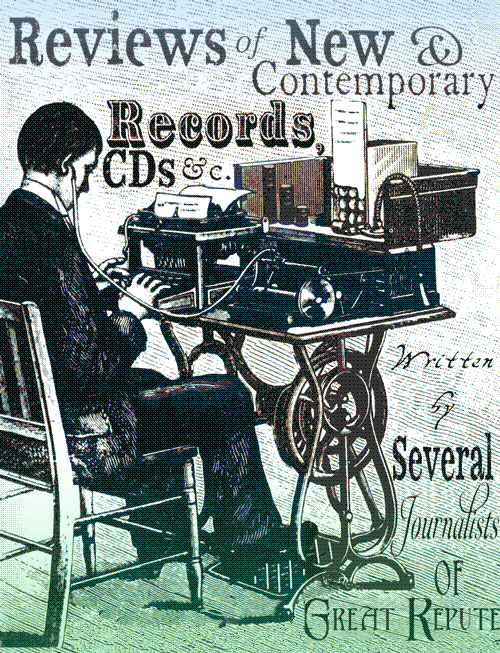 |
|
| = April 2013 = |
|
|
| Wolf People |
| Aaiiee |
| Brainiac Five |
| Farthest South |
| Ulfur |
| Paul Roland |
| Kitchen Cynics |
| Dean Allen Floyd |
| Mordecai Smith |
| Pegasus |
| The Honey Pot |
| Surf School Dropouts |
| In Zaire |
| Gavin Prior |
| Landing |
| Food Pyramid |
| Haas-Moreno |
| 30 Lbs of Bone |
| Bodo |
| Fredda |
| |
| |
| |
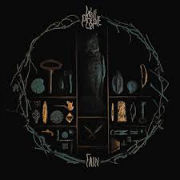
Home
|
WOLF PEOPLE – FAIN
(Vinyl LP/CD/download on Jagjaguwar)
It’s been nearly four years since Wolf People started to record their first album together, Steeple and it’s been a long wait to see where they’d go after it. In the intervening years, they’ve grown as a unit, their confidence and musical abilities have grown and as a result of regular touring, their audience has grown too.
So how do they build on all that? Second albums are always tricky beasts. Many’s the band to come unstuck on their sophomore set. And in that respect and in an odd sort of way Fain reminds me of Television’s Adventure in its more measured and thought-out approach and in its subtlety, which is where this album far outstrips its illustrious predecessor. You’ll find yourselves going back to this disc and discovering new delights for years to come. Where Fain really scores is in its refinement/maturity (and that's a pretty big thing to manage without losing sight of excitement, rawness, your roots or your vision). Full marks for sticking to tried and trusted and what they excel a at - so many acts fuck up on their second album.
Recorded mostly in an isolated house located in the rainy countryside of the Yorkshire Dales, Fain (an archaic term with various meanings, of which the Oxford Dictionary’s definition ‘compelled by the circumstances’ seems most appropriate here) picks up where Steeple left off. Itsees the group still mining that British folk vein and making it their very own. I’ve said it before but there hasn't been a band as good at this since the folk rock heyday some 40 years ago and the likes of Trees, early Steeleye Span or Fotheringay. This is reflected right down to the beautifully apposite front sleeve artwork. Singer, Jack Sharp observes, ‘I love all Joe's designs for our sleeves but this one is my favourite. I think it makes a huge difference when the person making the sleeve has been part of the entire process of the album. To me, the sleeve sums up instantly everything I feel about the record. All the objects in the wreath were found either at Joe's house, or Tom's parents’ house in Clophill’.
The band’s hallmark twin guitar sound is still completely intact – there are some passages here that rank amongst the best they’ve ever put down in the studio. Fortunately they’ve also managed to eschew the cloying harmonising leads done to death by outfits like Wishbone Ash and they still of course have the secret weapon of Joe Holick whose lead guitar runs sometimes just seem to come out of nowhere and completely blow your head clean off. His chops continue to improve, and his break on the brooding ‘Hesperus’ ranks as the best modal guitar solo you’ll hear this or any year. Having said that, it would be nice to see them stretch out a bit more like the old commune bands they’ve been spending time listening to recently. It took me a while to notice the influence of Grove bands like Mighty Baby, Pink Fairies, Steamhammer and even High Tide which bubbles around edges of this record.
The songs are generally far stronger than on Steeple and Jack Sharp’s voice is better recorded and more expressive. And of course Wolf People are now a fully integrated unit - the line up hadn't been together that long when that debut was recorded. They never get the credit they deserve but drummer Tom Watt and bass player Daniel Davies have grown into a magnificent, sturdy, reliable and musical rhythm section. Indeed the band seems much more at home in the studio on this. They’ve really learned their studio craft. One thing, for instance, that works so well here is the use of massed backing vocals on some cuts (supplied by Nicola Kearney and Rachel Davies from Stick in the Wheel). Their usage puts me in mind of a lot of those great folk rock albums from 70/71 (such as Marc Ellington's Rain/Reigns of Change or Rock On by The Bunch).
One of the most successful cuts of this new set is ‘Thief’, a wonderfully dark song sung in the first person of a robber ‘of high renown’ finally clapped in irons in Newgate Prison and facing the rope at Tyburn. Pitched somewhere in tone between Fairport’s ‘The Deserter’ and Thompson’s ‘Poor Will and the Jolly Hangman’, this cautionary tale shows just how adept Sharp has become at writing in the folk tradition – this could so easily have been sold by an 18th-century broadside ballad-seller! ‘I'm pretty proud of it!’ says Jack, ‘I wouldn't normally say that but it was such a struggle to complete and rehearse and record, I feel like it was quite a big achievement once it was finished’.
The first single from the new work, ‘All Returns’, has an interesting story behind it. ‘I dreamt that someone I know had put my entire life on trial, so the words come from that but aren't really about that’, says Jack, ‘We wrote the music together very quickly, and I thought the disembodied voice of someone calling for judgement went quite well with the music. I'd been reading a book about the Panacean society in Bedford, who were a sect based around the prophecies of Joanna Southcott, so I think I took some imagery from that’. ‘When the Fire Is Dead in the Grate’ is a nugget of pure Witchseason-style magic. This is a beauty. I’m tempted to say even a classic! If she were still with us I could so hear Sandy Denny having a crack at this. ‘This was written mostly at Joe's house from bits and pieces of ideas that we'd had for a while’, recalls Jack, ‘’I also remember writing parts of it in a terrible hotel in Tilburg while we were waiting to play at Roadburn. It's one of my favourites mainly because of Joe's cymbala (like a mini dulcimer) parts’.
‘NRR’ has been knocking around in the live set since 2009 so it’s a gas to finally have it immortalized in the studio, and it rounds the album off in suitably rumbustious fashion. I’ve always wanted to know what the abbreviation in its title stands for and Jack was happy to elaborate: ‘Not Runter Related! The song was called Runter for years, named after a kitten of Joe's (he wrote some of the guitar parts imagining the cat running up and down). The lyrics obviously aren't about Joe's cat so we changed the title at the last minute. It's also a reference to a record collecting forum etiquette where you write NRR (not record related), when you're posting off-topic’.
This is the moment when things catch fire and the Wolf People go out in a blaze of white light, white heat. It’s not quite a rave up, but with more than a passing nod to the Yardbirds’ brief but glorious Jeff Beck/Jimmy page twin guitar experiment, things get more than a little crazed here with big booming, see-sawing bass riffs, exploding drum fills, lightning fast guitar runs, and a truly infectious delivery. Who said you can’t dance to Wolf People?
You’ll need no enticement for this album if you’re already a fan and if you’re still waiting to find out what the fuss is about, Fain is a perfect introduction to one of the finest bands currently around.
What does beg the question is where do they go to now? If it was 1969 I'd be suggesting they use a Joe Boyd, Jac Holzman or even Guy Stevens for that next album - but not sure who is around now who'd have the sympathetic ear for what they do or the wisdom to provide them with some fresh perspective - Ashley Hutchings maybe? Perhaps they should do more acoustic stuff or add in more instrumentation? Or is it simply time to throw caution to the four winds and jump off that cliff into a more improvisational direction (the band has enjoyed some informal blows recently with psychedelic six-string legend, Martin Stone).
Whichever way they decide to go, I await studio album no 3 with bated breath.
(Nigel Cross) |
| |
|
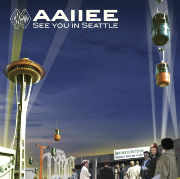
Home |
AAIIEE – SEE YOU IN SEATTLE
(CD on Vinyl Manor)
These 30-year veterans of the Seattle punk scene have finally gotten around to unleashing their debut full-length. [That silly name – a combination of a symbol (before Prince popularised the practice) and a sound approximating a guttural scream may have contributed to this anomaly!] And to propagate their enigmatic trek into rock and roll history, they’ve chosen to record a concept album commemorating the 50th anniversary of the “Century 21 Exposition”, aka, the Seattle World’s Fair!
Vincent Price welcomes us onto the ‘Monorail’ to speed through the fair, although guitarists Johnny Vinyl and Greg Stumph’s herky-jerky rhythms promise a bumpy ride. Imagine a hellbound train with Devo in the conductor’s seat! All of the exhibits get an irreverent, tongue-in-cheek ribbing that 50 years of hindsight provides. ‘World of Tomorrow’, for example, invites us to “step into the future/we’ve all got to do it”, despite the welcoming future’s threat of nuclear annihilation!
Seattle’s iconic landmark gets an effervescent, keyboard tribute in ‘Space Needle USA’, the bubbly tune anachronistically “foretelling” the wonderful ’80s New Wave dance scene. Vinyl also regales us with his own original impressions of the fair in the snappy ‘Johnny Vinyl Went to the World’s Fair When He Was 3’, while local Seattle character ‘Boris S Wort’ (nemesis of local kids’ TV show host J.P. Patches) gets a suitably punky put down. Even Fair manager Ewen Dingwall and US Science Pavillion Commissioner Dr. Athelstan Frederick Spilhaus get a name check in the eponymous ‘Dingwall & Spilhaus’, another syncopated dance routine tailor-made for stage diving into the mosh pit.
The vibe throughout is nostalgic, tempered with remorseful respect for lost innocence (cf. Johnny Vinyl’s tribute song mentioned above). Musically, it’s all over the map (in a good way), with special recommendations for fans of The Butthole Surfers, Dead Kennedys, Devo, and Camper Van Beethovan. In fact, any of these acts could do wonders with the wonderfully giddy ‘Gayway’, a wink-and-a-nod to the Fair’s midway that was later renamed “Fun Forest” (can’t imagine which is a better euphemism!) Featuring Vegas showgirls and porno puppets (the latter show produced by future H.R. Pufnstufers, Sid & Marty Kroft!), the tune leaves no holds barred as it welcomes visitors to the seedier aspects of this “adult village”. Everything ends with the optimistically ominous ‘Polar Star Of Love’, a let’s-all-hug-and-love-each-other paean (or perhaps “pee on” is more accurate!) to the 21st century’s forthcoming technological advancements which will lead to the end of war and Universal Love. At least Jeff “Lar” Larson’s supersonic love machine (i.e., screaming guitar solo) cuts through this load of malarkey! Overall, it’s a toss up as to what’s more fun – attending the actual fair or listening to this funny-yet-respectful musical accompaniment. I tell you one thing, it makes for a helluva Mr. Hyde to the stodgy Dr. Jekyl of Attilio Mineo’s Man In Space With Sounds! (Jeff Penczak) |
| |
|

Home |
BRAINIAC FIVE – SPACE IS THE PLACE
(10” EP on Shagrat Records)
I’ve always had soft spot for 10” records, or at least ever since the ‘Christmas at the Patti’ double live album won me over as a teenager. Shagrat Records have made an art form out of them of late, this newly recorded EP by Cornish legends the Brainiac Five being the most recent. And talking of art, you really need to see the cover: a stunning psychedelic collage by John Hurford which I’d give my eye-teeth for a poster of, had I any eye teeth left. Or indeed, any teeth at all. The A-side of this particular gem is only a little over 5 minutes long, but to torture the analogy still further it’s a real inner-eye opener: the spiky, angular punk lines of the original Brainiacs have been turned wave-form thanks to some gorgeous psychedelic guitar interplay between Charles Taylor – formerly Charlie Nothing - and Duncan Kerr, who played keyboards on the band’s original outing, the ‘World Inside’ LP which was recorded in 1979 but only released posthumously in 1988; readers with long memories will recall that we featured an otherwise unreleased number by them, ‘I Want you’, on the ‘Woronzoid’ compilation LP that launched the Ptolemaic Terrascope that same year.
Over on the flip, ‘Matelot Mick’ recalls the Comsat Angels with its driving riff, but with some scorching guitar woven throughout that puts me in mind of Richard Treece – and there are no higher accolades than that – whilst ‘Kabul’ ends in a firestorm of blurred guitar riffs that I can only imagine make for an absolute blinding closing song of their live set. More of this grist is needed, and soon! (Phil McMullen) |
| |
|
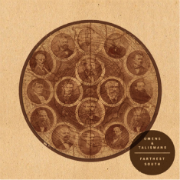
Home |
FARTHEST SOUTH – OMENS AND TALISMANS (Download and CD from Far South Records www.farthest-south.com )
A collaboration between an old friend of the Terrascope, Yair Yona, and free jazz saxophonist Albert Berger and recorded in Tel Aviv in 2012, the name “Farthest South” references the most southerly latitudes reached before the polar explorations of Amundsen, Scott and Shackleton. The significance of the term is that it doesn't represent a static place, but rather a point of ever shifting location each time someone managed to go further. It seems wholly appropriate that Yona should have chosen this name for a band which clearly relishes in pushing musical boundaries.
“A Lesson Leant – Pt 1” – ominous, pulsating opening before a minute or so in and the first blasts of Berger blow in. It’s the first of four tracks spanning the almost perfect album length of 42 minutes. This menacing backdrop tries valiantly or perhaps malevolently to anchor Berger’s soaring reeds and while of course it is not meant to succeed acts as a very effective foil – the sum of the parts and all that. “Pt II” is, initially at least, a more restrained affair but with admirable groove and plenty of skronk for those so inclined – indeed Berger seems more dominant here - before building layer upon dark layer so that by the mid point there is something of the night about it with guitar, bass and electronics locked in seemingly eternal and inconclusive battle. “Concrete Pt I – Godshall” is an abstract piece which builds patiently as Berger’s sax whispers and trills dancing around the electronic bleeps and pulses and occasionally dense notes of bass and guitar. At over 15 minutes it is the longest of the four tracks and the one most likely to outstay its welcome as the attention is at risk of wandering at around the mid-point when the experimentation begins to sound a bit self-indulgent. In distance running terms this is known as a “bad patch” through which athletes often appear to emerge stronger. Thankfully this would seem to be the case as the final third gathers momentum as if emerging, Leviathan-like from the sea mist courtesy of Berger’s fog horn blasts which give way to what could be the cries of a large sea mammal, and Yair Etziony’s infernal sounding electronics. “Concrete pt II – Mantram” is the final number and the most conventional on the ear. Lighter in touch than the previous workouts there is a palpable air of playfulness with Berger’s sax skipping over Yona’s insistent bass lines and Barry Berko’s psychedelically-inclined guitar as the band hits a repetitive but quite pleasingly groove.
It isn’t meant to be an easy listen and so it proves. Then, as we’ve said time and again here at the Terrascope the most rewarding experiences are often the hardest fought and although Omens and Talismans isn’t likely to top too many people’s list of must-have albums for 2013 outside perhaps of those on the Wire subscription list there is plenty to grapple with and enjoy. In fact more lateral thinking and avant-garde inclined among the Hawkwind and Gong fan bases (and we know there are some of you out there) will find this intriguing and quite rewarding as will collectors of 60s era Impulse and BYG label jazz. (Ian Fraser) |
| |
|
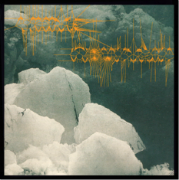
Home |
ULFUR – WHITE MOUNTAIN (CD/LP/Download from Western Vinyl www.westernvinyl.com )
Unsurprisingly atmospheric and expansive given Ulfur Hansson’s pedigree as a member of both metal band Sword of Chaos and of Icelandic King of Cool Jonsi’s (Sigur Ros) live band, White Mountain would appear to make a fair case to be the soundtrack of our unseasonably cold “spring” here in North Western Europe. The tone is set before you even unsheathe the physical product as the cover depicts arctic conditions with “jack frost” script to boot and the seven tracks within dutifully follow suit. “Evoke Ewok” sets the tone, a host of ambient found sounds, the pleasantly soporific drone eked out by plinking harp strings and babbling “voices”. The addition of shard-fragile vocals on “So Very Strange” courtesy of Alexandra Sausser-Monnig of Mountain Man, lends a slightly more corporeal though no less evocative feel to proceedings. “Black Shore” plonks a huge mountain troll’s boot quite firmly in Boards of Canada territory while for those of us from a certain isle and of a certain age the single “Heaven in a Wallflower” nods pleasantly in the direction of Noggin the Nog and no doubt the Norse folk tradition but with the advantages of 21st century production values and post-modern interpretation. The beautiful title track is my highlight with its luxurious and melodic mix of traditional and contemporary instrumentation, the mood at once light and dense and the one composition most likely to single out White Mountain as something a bit out of the ordinary. Mind you, the frustratingly short “Knoll of Juniper” and the glacial “Molasses” which brings the ice sheet down on half an hour of brief but rewarding musical introspection both make for a fine supporting cast as does the rest of this delicate sounding yet assured and winning debut offering. (Ian Fraser) |
| |
|
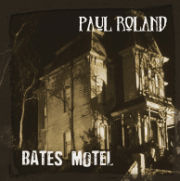
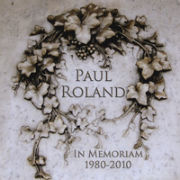
Home |
PAUL ROLAND - BATES MOTEL
( CD from http://www.sireena.de/)
PAUL ROLAND – IN MEMORIAM 1980-2010
(2xCD from Gaslight Records)
During the time of the “V.U.” album, Paul Roland met up with members of The Velvet Underground and plans were hatched to records some of Paul's songs. Sadly, these plans never came to fruition and the songs were shelved as Paul took a break from music to raise his family, something he obviously achieved as his son Joshua plays bass on this disc.
Opening with “I Was A Teenage Zombie”, the first thing you notice is that the song rocks harder than much of Paul's work, being a fine garage rocker with some fine guitar courtesy of Sonny Midnight. On “Kali” the pace is slowed as the song reveals itself to be an atmospheric slice of Eastern influenced psych, a tale of Goddess and sacrifice that is filled with quiet malice. Next up the title track is typical Roland, minor chords and lyrics that deal with the dark and twisted, the song destined to become one of his best, everything beautifully controlled and arranged.
As you can tell by now, the tunes on this collection are based on classic B-movie themes, horror tales and creeping malevolence, each one different from the last, but the whole collection running together like the anthologies of creepy tales I used to read as a teenager.
Sounding like The Strokes, “How I Escaped From Devil's Island” moves at a frantic pace, very likely the fastest thing Paul has ever recorded, whilst “The Wailing Well” (based on a story by M.R.James) has buckets of atmosphere and more excellent guitar and organ interplay.
As the album moves on the mix of energy and atmosphere continues creating a strong collection of tunes that rank as some of my favourite Roland moments, the album ending on a high with the tongue in cheek humour of “I'm In Love With Myself”, power-pop tune that will make you smile.
Whilst there is no doubt that these songs would have sounded completely different with the input of The Velvets, I, for one, are glad that they have been made available by the man himself, becoming one of my favourite albums by a unique artist who has remained true to his artistic vision for many years and for that he should be applauded.
Those of you wishing to investigate the back catalogue might like to try “In Memoriam”, a double disc containing some of Paul's finest moments. Seemingly released as a replacement to “Gaslight Tales”, a similar double compilation released in 2003, this version drops a few earlier songs and catches up with the later period. In general this is a good thing although the loss of early classic “Madelaine” is a bit of a tragedy in my book [mine too! This was my favourite song of Roland’s! – Phil], something redeemed by the fact that the beautiful, haunting ballad “Wyndham Hill” remains in place. When listening to the collection you are struck by the fact that there are many different styles to be heard, folk, rock, psych, pop, music-hall, yet they are all obviously the work of the same man regardless of genre, age or length, the lyrical subjects tying the songs together with their tales of madmen, murder, adventure, strange creatures and Gothic Victoriana. I am not going to dissect this collection in detail, all I can say is that music of quality is sometimes hard to come by and this collection has quality in abundance, the songs never losing sight of the melody, each one a tiny gem to be enjoyed over and over again. (Simon Lewis) |
| |
|
(no covers provided)
Home |
THE KITCHEN CYNICS - SELECTIVE MEMORY
KITCHEN CYNICS ORCHESTRA - WOODWASPS
MATRICARIANS - FISH WATCHING TRAFFIC
(kitchencynics@googlemail.com)
It seems amazing to me that after so many years of intense songwriting that Alan Davidson has any melody left in him at all. Yet, with “Selective Memory” he has managed to produce on of his best collections, a heady blend of songwriting skill, experimentation and melancholic delight, the whole thing flowing like a summer stream, sparkling and completely enchanting.
If there was a list of ten reasons to love the Kitchen Cynics then the title track of this collection would be in there, sweet melody and a lyrical charm blending to perfection and delivered with warmth and meaning, the subject of growing old ,very possibly, touching many Terrascope regulars. Next up, “Gayle, Carrick and the Midnight Moths” showcases the other side of the disc, a drifting ambient instrumental with delicate guitar notes spiralling over a gossamer drone, the tune the ideal way to introduce “In Love”, a bitter-sweet song of lost love, of the kind Alan does so well.
Deeply emotional, “Flies (For David Mackay) has some aching recorder draped over it, the song a tribute to a recently departed friend, the loss evident in the delivery and feel of the tune.
Sounding like a piece of early Pink Floyd experimentation, “Bee at the Window” is a fine slice of echo-fuelled psych, mellow rather than manic, as you would expect, whilst “Men Going Out For Drinks” is evocative as a sepia postcard, the addition of a Banjo, adding a nostalgic feel to the tune.
Over fourteen tracks, Alan does not put a foot wrong, old fans/friends so rush out and get a copy, those who are yet to experience the unique magic of The Kitchen Cynics would do well to develop a habit right now, even if it is only to hear the charm of “If I Was A Worm”, the spirit and wonder of the Incredible String Band channelled through the home-spun genius of Alan Davidson, priceless.
With the addition of Claire Harkins (guitar/theremin) and Jan Stewart (guitar), who play in drone/shoegaze band Seas Starry, the kitchen cynics become an orchestra, the sounds becoming denser and more abstract, the sweet melodies buried under guitar noise and drone, all of which is perfectly realised on the opening tune “Laika and David Come Home”, a fine piece of experimentation that drift like moondust across the brain. On “Woodwasps Under a Glass” a shimmering guitar takes centre stage, a Theremin and whistle drifting in and out of the piece, like insects feeding on candy floss, the effect slightly disorientating but in a good way. Moving into darker waters, “Shadow of a Street Preacher” is a fractured drone that lives on the edge of chaos, whilst the excellently named “Lost in a Deep, Deep Drawer” softens the tones to create a floatation tank vibe.
Best heard as a whole entity, rather than a collection of track, this is another highly recommended listen for adventurous ears everywhere.
Being the first Matricarians Release since the sad passing of band member and good friend David Mackay, the recording of “Fish Watching Traffic” was a strange and emotional experience for Alan and Susan Matthew. This emotion is evident in opening track “The Pigeon and the Many Leaves”, a haunting piano-led piece that is sad and nostalgic, the notes falling like soft autumn rain watched though an upstairs window, the mood continued on “Little Sally Walker”, another tale of lost love, made even more beautiful by Susan's voice and the gentle arrangement. After the abstract synth swirl and drone of “Umbilical Chord”, the title track turns out to be a piece of experimental sound dominated by the piano, reminding me of Kevin Ayers in its tones and textures.
Woozy and magical “Christmas Hunting Song” is a delightful slice of whimsy, with treated vocals and rhodes style keyboards, the hypnotic repetition of the notes adding to the dream-like qualities of the track, creating one of my favourites on the album.
Recorded live at, I think, a tribute show for David, “Bogies Bonny Bell/Jock Sheep” could/should be seen as the centrepiece of the album, a twenty minute track that is experimental in nature. Opening with chiming bells and stuttering electronics the arrival of Alan's voice adds some grounding to the piece, although this is a brief interlude, the sense of time fragmenting never leaving as the music pushes forward gaining in intensity, creating a dark and eerie sound suiting the lyrical content. After such intensity, the simple melody of “A poor Widow” is a gentle relief, two voices blending together in harmony, the whole album rounded off by “Live In the Living Room, Holborn Street”, a thirty minute improv that creaks, rattles and scrapes along with a peculiar charm of its own, melodies drifting in and out of the piece, meaning it never becomes too harsh or dull to the ear, allowing the listener plenty of time to dream in quiet contemplation.
What can I say, three fine releases that are quintessentially Terrascopic and therefore demanding of your attention. (Simon Lewis). |
| |
|
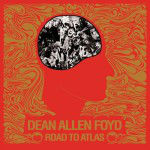
Home |
DEAN ALLEN FOYD - ROAD TO ATLAS
(10” Vinyl from www.crusherrecords.com)
One of the things I have noticed as the Terrascope reviews editor is that how even underground music has trends, certain styles of music coming to the fore and then fading again. A few years ago it was wyrd/dark folk that ruled, then we had a brief sighting of space rock, sparking like a comet before heading back into deep space. At present it seems that classic Psychedelia is heading to the front of the pack, at least that how it seems from the stuff falling through the door lately. By classic, I mean music that is firmly rooted in the sixties style, no bad thing, and I am willing to bet every Terrascope reader has some classic psych lurking in their collections and that it gets regular airings, even if only for nostalgic purposes, the warmth of something both excellent and familiar.
Anyway, this five-track collection from Swedish band Dean Allen Foyd could easily have been recorded in 1968/69, songs that are heavy yet melodic, often lurch into swirls of confusion and beautifully re-construct the time period, shades of Family, The Moving Sidewalks, Arthur Brown or Quicksilver to be found within their most excellent grooves. Take, for instance, “Sadness of Mankind”, the opening salvo that begins as a mellow Byrds inspired groove, before a heavy organ takes it into Strawberry Alarm Clock territory, the two style working beautifully together, giving a gritty energy that suits the dark lyrical content, the whole song arranged with enough detail and changes of pace to keep you enthralled throughout. Next up, “Insects” is possibly the collection's finest moment, a seven minute tour-de-force that has beauty and madness, heavy guitar riffs creating a deeply unsettling ambience around which the keys and rhythms dance,creating a trippy delight with suitably demented lyrics. If this was a genuine sixties tune it would be ranked as a classic, containing everything good about psychedelia including some great West-Coast guitar lines.
As well as amazing songs, it is obvious that the musicians know their way around their chosen instruments, have great understanding and love playing giving the songs great warmth as they come from the soul, this is the music they want to make and boy do they do it well.
At under three minutes, “Leave Me Be” is a short blast of heavy blues that veers into garage land before the sweet guitar of “hwy Lost” breaks in, another heavy piece of R'n'B/blues that will get you grooving around the room, the band obviously having a good time playing together.
Finally, the title track leads us out, a swirling piece of psych that hits the spot, a slow-burning acid comedown that has darkness and paranoia at its centre, the song just drifting into oblivion ending a truly excellent release. (Simon Lewis) |
| |
|
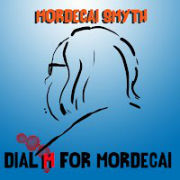
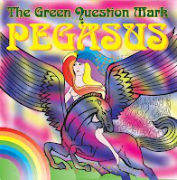
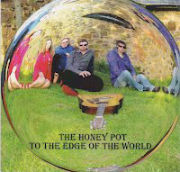
Home |
MORDECAI SMYTH - DIAL M FOR MORDECAI 7” EP
THE GREEN QUESTION MARK - PEGASUS 7” EP
THE HONEY POT - TO THE EDGE OF THE WORLD CD EP
(http://www.mega-dodo.co.uk/)
Pressed on glorious orange vinyl (yes, I am a sucker for this kinda stuff), the latest EP from Mordecai Smyth contains four fine examples of sixties UK psych, coils of incense smoke curling around the shadows of The Idle Race, Pretty Things or Apple. Opening in style “Dream On (marnie)”, is a tale of a girl who wants to dream the day away, the tune awash with woozy strings, the perfect guitar tones/vocal stylings and an arrangement that allows the tune to flow freely creating a truly memorable three minutes. Despite being called “Psychedelic Sarah” there is a more pop edge to the next tune, More Hollies than Floyd, although the lyrics are suitably trippy and the song is still an excellent example of pop music clothed in a lysergic cloak of many colours. Upping the energy level, “Dark Haired Douglas” has some fine freakbeat guitar, a tale of an old school scoundrel and a girl from the in-crowd, she completely blanking his advances as the world changes its point of view. Finally, “Trapped” has a wandering Doors inspired organ, phased vocals and loads of attitude rounding of a great retro collection, proving that psychedelic music still exists in all its guises. Also released from the band, but not currently available is “Georgina Jones” (yet another name), a two track single on lovely purple wax, in the same style it is well worth hunting down.
Mainly the work of Marrs Bonfire, a DJ on Bay FM radio (106.40), whose show covers psych, freakbeat, mod etc, the “Pegasus” EP collects together four covers of sixties psych-pop tunes. Once you have placed the needle on the lovely green vinyl (grin), a rather splendid version of “She's a Rainbow” greets your ears, complete with all manner of effects and slightly faster than the original the track includes mellotron from Mordecai Smyth an is just excellent. Next up, the reasonably obscure “Lucy Leave” (Pink Floyd) is given the once over, the tune full of energy and some fine guitar courtesy of Mr Smyth, again. On side 2, some chiming bells usher in “Pegasus” (The Hollies), the song given a haunting psych sheen, the arrangement lifting the song making my favourite on the collection, but then I love sixties psych-pop and this is a perfect example. Finally, a rip-roaring cover of “Elevator” (Grapefruit), the band going for the psychedelic jugular with effects and instrument writhing together in an arrangement designed to blow your mind. Not having heard the original (something I plan to rectify soon), I can make no comparison, but if it is a good as this version then I will be a very happy man. If this collection was released on Fruit De Mer Records, it would sell out instantly, I see no reason why Mega Dodo should fare any worse, a minor classic and worth your money.
Moving from analogue to digital, “To the Edge of the World” is a fourteen track collection of Psychedelic pop, drawing on influences such as The Small faces, Jefferson Airplane, The Hollies and sixties psych in general, the band mixing the English sound with a large helping of West-Coast groove. Opening with the title track the band show themselves to be in that groove right from the off, a gentle beginning slowly rising in energy levels, sounding like an English Elevators by the end A fine opener that is matched by the brilliance of “Comfys Honey Jar”, a kaleidoscopic tune that is sweetly lysergic, a tune that would be the highlight of any Rubbles compilation it graced, the hero of the tune sitting in a “state of bliss” due to his jar of honey.
From here on in the band rarely put a foot wrong, the whole album flowing beautifully,with strong songs and great arrangements, the playing matching the quality of the songs, with the blending of male/female vocals really lifting the songs. Highlights include the California swirl of “Paper Garden” with its Airplane coating, the haunting “Hazy Recollections” also in the West-Coast style, and “Florence” which is as English as English can be, in a Psych-Pop kinda way, you just know you will be home in time for tea.
With music of this quality Mega Dodo are heading in the right direction, please support an independent and get some quality music at the same time,you know it makes sense. (Simon Lewis) |
| |
|

Home |
SURF SCHOOL DROPOUTS - SUMMER IS A STATE OF MIND
(LP from http://www.sunnydayrecords.es/english.html)
So, how is it that a quartet of musicians from Northern Denmark can release an album on a Spanish label and manage to produce some of the finest Californian sunshine pop I heard for a long time, pretty much since the sixties actually. Channelling The Beach Boys as their prime influence, the band weave their magic over 14 tracks of near perfection, featuring songs with the optimism of early summer, the fun-packed summer itself and then the melancholy feel of approaching autumn, all with gorgeous harmonies,jangling guitar and also a slight Doorsian feel on tracks such as the beautiful “Follow Sun”. Elsewhere, the title track has a glorious summer sheen, whilst “Beach Bound” will have you singing along happily, these two tracks split by “Interlude I”, sounding like an outtake from “Pet Sounds” complete with a Theremin running through it. There are two other “Interludes on the collection, both brief but still adding something to the overall feel of the record.
Opening side two, “Favourite Record” is a homage to those songs we love, a personal soundtrack that evokes memories whenever we hear it, the crackles and pops only adding to the warmth and joy. I suspect that most Terrascope fans can relate to this tune, the fact that it is beautifully arranged and contains some of the best harmonies on the album is also a major plus point, of course.
Almost defining Sunshine Pop, “Stone Cold Crazy” is a tale of unrequited love that could actually be The Beach Boys, whilst “Hold on to Me” is a tale of love slipping away, the sad lyrics at odds with the loveliness of the tune, something else that echoes the classic songs of the sixties, an era that this album unashamedly harkens back to and in which it would have shone out. Finally, “Glad You Decided to Stay” offers a glimmer of hope, a chance to talk, ending the album as strongly as it began.
What can I say, I love this album, the more I play it the better it gets, fans of mellow surf, Californian harmonies and timeless melodies should just dive right in. (Simon Lewis) |
| |
|
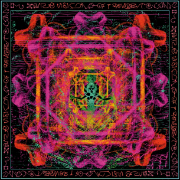
Home |
IN ZAIRE - WHITE SUN BLACK SUN
(Ltd edition vinyl LP and Download from Sound of Cobra http://soundofcobra.bandcamp.com/)
The first full length album from mostly instrumental Italian trio In Zaire, White Sun Black Sun takes the basic psychedelic template and gives it some sharp sonic twists, taking a familiar format into some strange, interesting and damned enjoyable places. From the racy and energetic onslaught of “Sun” (each of the seven tracks are astronomically themed) it is clear that In Zaire owe a debt to Hawkwind and the more explosive armoury of the Krautrock Korp not to mention the excesses of Japrock. One can only imagine what Julian Cope must think of this (visions abound of all his birthdays and Christmas converging at once). However, explore further and you are struck by a rhythmic inventiveness that goes way beyond four to the floor, such as on “Moon” which takes on a Hillage/Ozrics-style catchiness that gets the foot tapping and the shoulders shuffling (plays havoc with your typing, mind), and “Mercury” which somehow manages to merge funk and motorik grooves and works perfectly. The most curious and quirky thing here is “Mars” which overlays slide guitar on top of a raga style backdrop – a sort of cowboys and Indian trip that again defies logic in that it shouldn’t sound half as effective as it does. As a soundtrack to a skewed and lysergic modern day western this one would definitely hit the spot. Elsewhere “Jupiter” could give Massive Attack or any of the downbeat crew a run for moodiness and that heady feel of dub-drenched dope-filled paranoia while “Venus” merges jazzier beats with good old fashioned cosmic riffing and “Saturn” offers up a more subdued and trance-like ambience before kicking back in to “Sun” territory for something of a rapturous head-first landing on some distant molten rock
All told White Sun Black Sun is a total gas, and I’m not just referring to the rings of Saturn or clouds of Jupiter or whatever. Up there on a par with recent releases by Gnod, Thought Forms and Hookworm this is psychedelic music you can dance to and is really quite fabulous. (Ian Fraser) |
| |
|
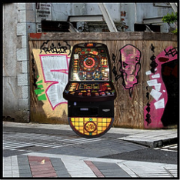
Home |
GAVIN PRIOR – BABBLEON CORK
(Download from http://www.desertedvillage.com/)
Babbleon Cork is the result of Deserted Village/United Bible Studies mainstay Gavin Prior’s residency at the Guesthouse – a hub of arts of music in the city of Cork, Ireland - in May 2010. An audio collage in three parts, it is composed solely of sounds recorded during his time in Cork, captured mostly spontaneously on a portable tape recorder and taking in amongst other subjects teenagers in a chip shop, drunken students, a homeless man, a church mass and what sounds like a boxing gymnasium.
Throughout the three pieces the lilting Cork dialect cuts through like knife through butter although not always wholly legible amongst the other found sounds and field recordings and given the inventive loops and cut and paste treatment which Prior employs. The whole experience captures the irreverent and often course and unsettling energy of the city and makes for an abstract, intriguing and, in its own way, psychedelic experience (it certainly takes me back to when ingesting certain mind altering substances and then spending long hours wandering around public spaces was considered a good idea).
This short album (22 minutes) is released as a free download, under a creative commons licence, and is available for people to sample and remix and which the curious and more experimentally minded readership may well find rewarding. (Ian Fraser) |
| |
|
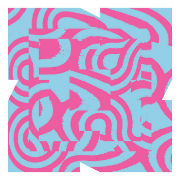
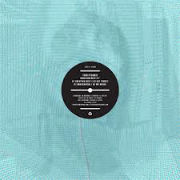
Home
|
LANDING - WAVE LAIR
FOOD PYRAMID - CREATION BEAT
(12” vinyl EPs fromwww.thesearenotrecords.com
With the addition of drum machines and sequencers, Landing have taken their music into new territories,retaining their sense of melody, whilst a host of different sounds have entered their sonic world, the music a heady mix of dream-pop and hypnotic rhythms, Klaus schulze meeting Sigur Ros on a summers day.
Opening with a whoosh of electronics, “Patterns” highlights the ethereal voice of Adrienne Snow that light up the track, blending with the dreamy guitar and electronic sequences to create a delightful tune, a warm bass adding another layer to the song. With looped guitar and a bass groove, “Resonance” moves into Cocteau Twins territory, a languid tempo allowing the song to shimmer with grace, the electronic percussion used sparsely and to good effect. Sounding more like the Landing of old, “Cover Bare Arms” is built around a pulsing bass line, the guitar adding sparkling melody lines to the tune, the ghostly voice of Aaron Snow almost lost in the mix, buried under warm reverb and rising synth chords.
Having served up a trio of delightful pop ditties, side two finds the band stretching out for the epic nineteen minute title track, the electronics tacking centre stage creating a vast tapestry of sound. Beginning with a deep bass pulse, the track soon adds hazy synth chords and droned guitar washes that reveberate across the room like a heat haze on a desert highway, the sound s drifting and expansive. As the piece moves on in hypnotic splendour more layers are added, the track seemingly moving back in time to become a slice of Kraut inspired music, the rhythms becoming embedded in your brain, the textures coiling around each other, the only thing you can do is lie back and allow yourself to be transported. Whilst never entirely vanishing, towards the middle of the track, the pulse is relegated to the background, the drone enveloping time and space, the addition of almost hidden vocals an unexpected and delightful distraction before the piece dissolves into a floatation tank phase, barely moving far few minutes, until that pulse returns to lead us home. Truly magnificent, it is good to hear a band continue to experiment and move forward with new ideas and bags of confidence.
Having remembered to change the speed to 45 (although it sounded pretty good at 33 as well, except for the vocals), the music of Food Pyramid reveals itself as electronic dance, reliant on sequences, drum machines and the like, although treated vocals and guitars gives the sound a more human edge, coming on like System 7 and Yello jamming with Daevid Allen, the funky grooves stretched out and twisted all over the place. On “Eat Street” huge waves of synth chords (and some space rock guitar towards the end) elevate the track, allowing it to soar with ambient delight into new territory, a track that would delight fans of any electronic genre, the band managing to tie it all together into a cohesive whole.
Over on side two, “Crosshatch” gets busy with the beats a heavy dance vibe lead by an insistent bass drum ensuring no sleep for the neighbours, the track building in intensity with chattering sequences and rhythmic patterns leaping in and out of the mix to keep things interesting. To finish, “My House” has a chilled dance on the beach feel, a warm deep house groove with female vocals drifting through, ending a fine EP in relaxed and languid style. Whilst it may not be strictly Terrascopic, there is much to be enjoyed here, especially on the more earthy tracks on side one, with the title track itself being the track of choice. (Simon Lewis) |
| |
|
Home |
HAAS-MORENO LP PROJECT - S/T
(LP from haasmoreno@gmail.com)
Basically a collaboration between Andy Haas – saxophone and David Moreno – Synths/electronics, this free flowing and wide ranging collection features some mellow avante-garde sax, and electronic sequences , loops and textures, the whole album spacey, psychedelic, experimental and playful.
Opening with the Tangerine Dream Influenced “Sequence Green”, a melodic sax riding slow waves of synth, the album soon finds its groove with the spacier “Delay Blue” a triumphant (and far too short) mix of chattering electronics and echoed flutes that sounds like an ethnic version of the radiophonic workshop. Coming on like an outtake from “666”, the short “Amplifier Red”eventually gains its pulse, becoming the perfect introduction to “Oscillator Magenta” a longer track that sees the saxophone move from wail to skronk, the backing sounding like one of Daevid Allen's New York experiments in the 80's, the track containing a harsher metallic quality than the previous selections. To round off side one “Filter Violet” (there is definitely a theme developing with these titles), is a swirling abstract cloud of sound that is mellow and engaging, suggesting that a lot of time and effort went into choosing the right sounds for this, and the other tracks on the album.
Over on side two, thing remain mellow for the beautiful “generator Yellow”, another understated piece, the saxophone gliding over a lake of sound reminding me of the work of Didiere Malherbe at his relaxed best. With a strange synth pulse “Pitch Shift Orange” is a hypnotic yet chilled ride, the track paving the way for the heavier rhythmic patterns that drive “Multiplier Grey” a more intense ride that has echoed, squealing sax flying around the room creating a feeling of suspense and uncertainty. To end, “Envelope White” is a calmer piece with some lovely sax tones and a warm electronic undercurrent, leading you out with gentle precision.
With David Moreno having exhibited at The Museum of Modern Art, as well as abroad in Japan, Brazil and Europe, and Andy Haas having played with John Zorn, Thurston Moore, Fred Frith and numerous others, there is no doubting the pedigree of the performers. This is underlined by the quality on offer, The fact the Mr Haas also played the solo on “Echo Beach” is one of those trivial facts that makes the project a tiny bit better by raising a smile. Great stuff. (Simon Lewis) |
| |
|
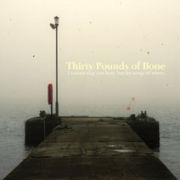
Home |
THIRTY POUNDS OF BONE - I CANNOT SING YOU HERE, BUT FOR SONGS OF WHERE
(CD/DL www.armellodie.com)
Masterminded by Johny Lamb, this epic collection deals with place and displacement, the meaning of home, and the uncertainty of travel. Along the way it takes in traditional folk tunes, drone, experimentation and the realisation that things have to change, the whole album held together by the cracked and nostalgic voice of Mr Lamb himself, that unique voice adding huge depth of emotion to the tunes on show.
Opening with an interpretation of a traditional Veesik, a lost form of Shetland song, he album builds atmosphere quickly, droning accordion and vocals floating over a simple clapped beat like a sea fog fast approaching land. After the gentle strains of “The Truth of the Matter” a song which reminds me of something the Fence Collective could have performed, we come to the first highlight as “Home Fairing” , an aching ballad that sounds like it could be as old as the sea, although the writing credits disprove this notion, the harmony vocals blending beautifully, nostalgia made sound and a song you will want to hear again.
Featuring a huge array of instruments, both acoustic and electric, gives this album an almost cinematic feel, indeed the stories and words paint pictures in your mind, although these are personal to the listener, the pictures tempered by your urge to sing along to songs such as the rousing “The Streets I Staggered Down”, or the haunting “The Ballad of Cootehill”, wherein our hero attempts to visit his mothers house only to find it demolished, ending up in the local bars, the tune highlighting the emotional richness of the vocal delivery, perfectly suited to the lyrical content. Also highlighting the voice, “Mother This Land Won't Hold Me” begins as an solo voice before the band (sounding like early Pogues) join in, the whole thing suddenly changing as a droning electric guitar pulls the tune in a different more chaotic direction.
More traditional and with an almost jaunty feel, “How We Make a Mongrel of the Music of the Archipelago” will have you dancing around the kitchen, or whatever room you are in, although this sudden bout of energy soon dissipates as we return to gentler sounds of “The Maritime Line”, a simple tune that is simply gorgeous, the voice reminding me of Julian Cope in its tones and delivery.
To wind the collection up, the slightly ominous tones of “The Wolf on the Shelf” sing of home and the possessions that define home, is it a place or a collection of familiar objects? The singer seemingly uncertain, the music heading into dark places behind him.
Deeply personal and authentic, this is a wonderful album that is rapidly becoming my album of the year so far, a rich and rewarding collection the is filled with emotion and finely crafted songs. (Simon Lewis) |
| |
|

Home |
BODO – HITS INTERNACIONALES
(CD on Normal )
Bodo Molitor was an ex-pat German who managed to score a solo gig at a Blues and Rock club in downtown Mexico City during the 1968 Olympics. Someone liked what they heard and introduced him to the head of the country’s largest record label, Orfeon, who put Bodo together in a studio with some musicians from up north in Chihuahua to record what has become one of Mexico’s rarest psych albums. [Bodo was also an accomplished painter and drew the album cover, along with the amazing cover to the Kaleidoscope album and several others for the Mexican Zave imprint.]
Alongside a few Bodo originals (the Dylanesque ‘Laziness’ is the best), the band run through some wigged out cover versions of recent hits (including blistering versions of Steppenwolf’s first two singles!), a countrified, Dead-like interpretation of Nina Simone’s ‘Real Real’, and appropriately sloppy renditions of The Beatles (including the snarling bonus track, ‘You Can’t Do That’), Lonnie Donnegan (a haunting ‘When I Was Seventeen’), and perennial favourites, ‘St. James Infirmary’ and ‘The Midnight Hour’.
Bodo says he didn’t know the musicians and they mostly arranged the tracks in the studio just before they started rolling tape, which accounts for the live, garagey vibe on most of the tracks. But the organ work by Kaleidoscope’s keyboardist Jorge Rene Gonzales rates up there with Alan Price’s work with The Animals (a smoking version of ‘Don’t Let Me Be Misunderstood’ is one of the album’s highlights and gives you a strong idea of Bodo’s influences) and the guitar work throughout by Juan Garcia Aragon is amongst the finest of the period. The Steppenwolf covers are naturally suited to Bodo’s gruff vocals, which fall somewhere between John Kay (Bodo grew up in the same town where Kay was born!), Jim Morrison (Bodo’s demo audition of ‘Hello I Love You’ is among four bonus tracks), and the enigmatic Phantom, and for an album that was obviously recorded so quickly, there are a surprising number of tracks that will stay with you long after you file the disk away with your South of The Border psych. [This reissue includes several bonus tracks, including the aforementioned Doors cover, a couple of white-hot bluesy recordings from a Dutch radio station, and a live performance from Amsterdam’s Paradiso in 1972 that gives an idea of what Bodo could do on the stage.]
(Jeff Penczak) |
| |
|

Home |
FREDDA – L’ANCOLIE
(CD on Le Pop Musik)
As a sucker for anything with even the faintest aroma of yé-yé, I anxiously awaited the musical endeavours of Frédérique Dastrevigne (aka, Fredda) and her fourth album doesn’t disappoint. Oh, there’s more ooh la la than giddy schoolgirl pop (think more Juliet Greco or late period Hardy or recent offerings from the new breed of French chanson like Keren Ann and Madeleine Peyroux), but Fredda’s song writing pays fitting tribute to the tradition of Edith Piaf, et. al. The bouncy ‘Il Ne Me Reste’ has a catchy chorus that’ll bore its way into your skull even if your French is a tad rusty (or you don’t grasp it at all) while other tracks are perfect dinner music for a lazy picnic on the Champs de Mars as the sun sets behind the Eiffel Tower. ‘Constant’ even has a shuffling, Cohenesque vibe that’s as light and fluffy as a breakfast pain au chocolat.
Fredda’s vocals are RIGHT THERE in the room with you, serpentining around your heart like a cobra poised for the kill and the delicate acoustic guitar work of Mocke (from French band Holden) fits her voice like a glove. There are times I thought I was listening to a French edition of Vashti Bunyan’s Just Another Diamond Day and others when I just wanted to let my mind wander through the labyrinthian Parisian back streets, anticipating a chance encounter with a delicate little waif singing for her supper on some deserted street corner. Absolument fabuleux!
(Jeff Penczak) |
| |
|
| |
|
|
 |
|

